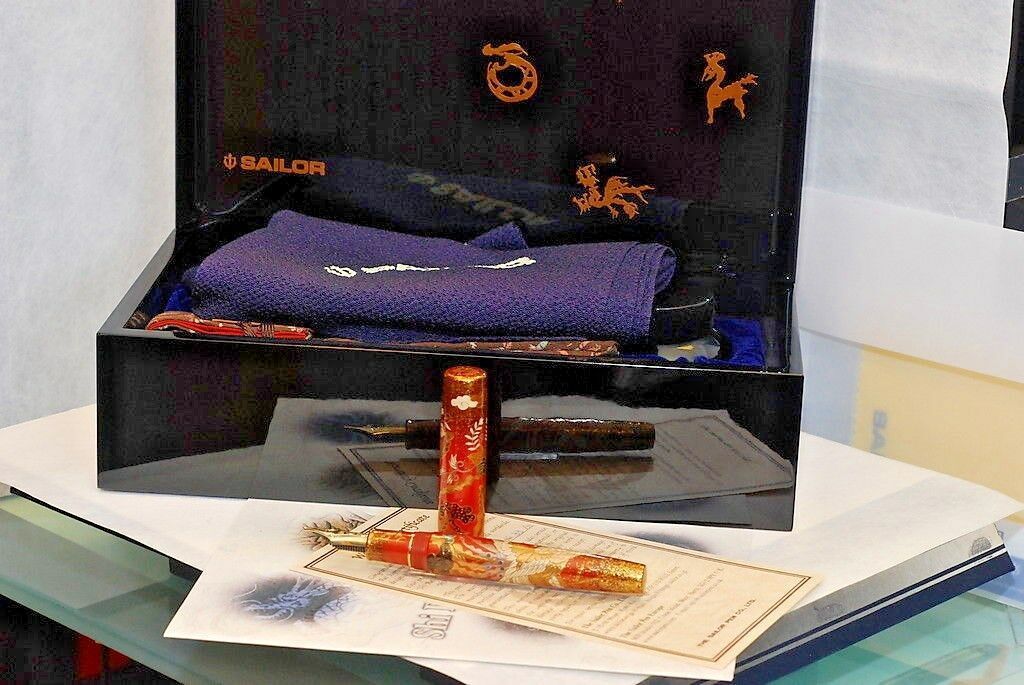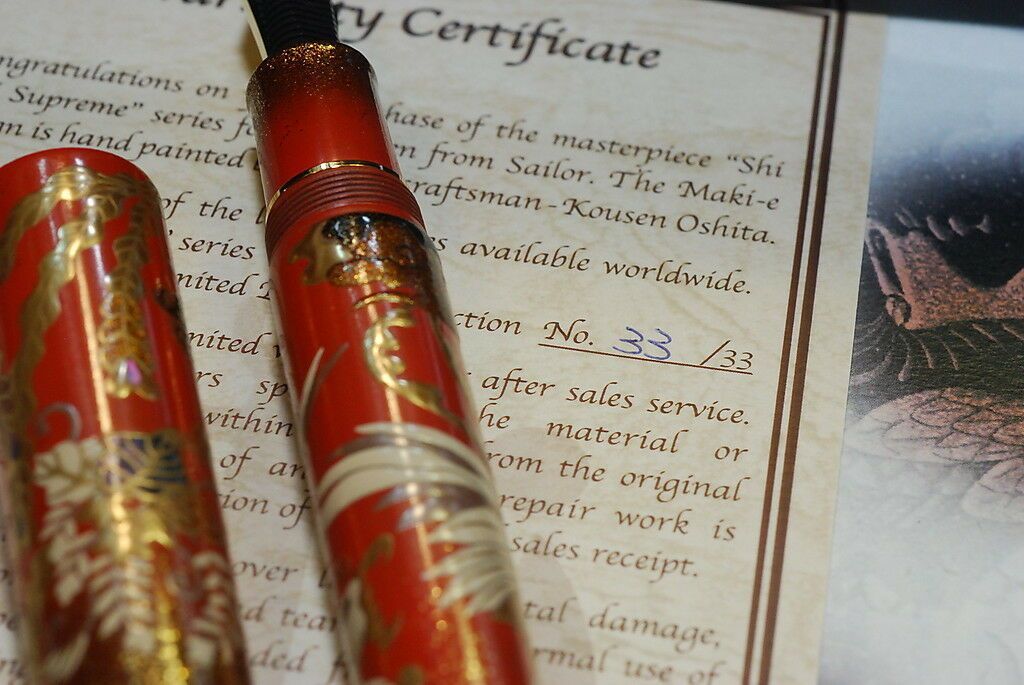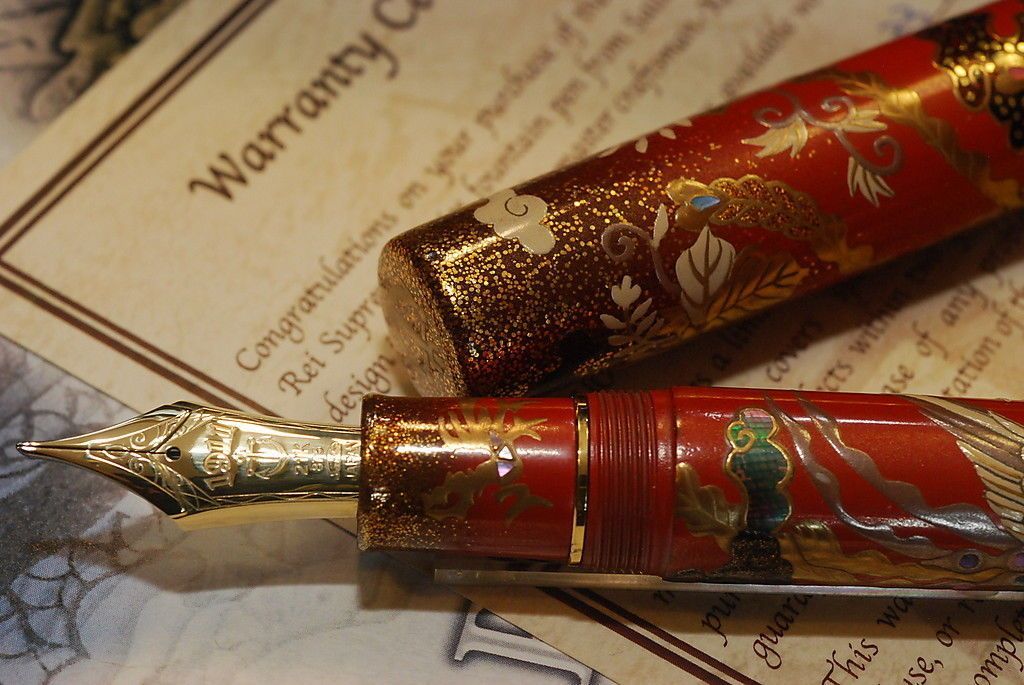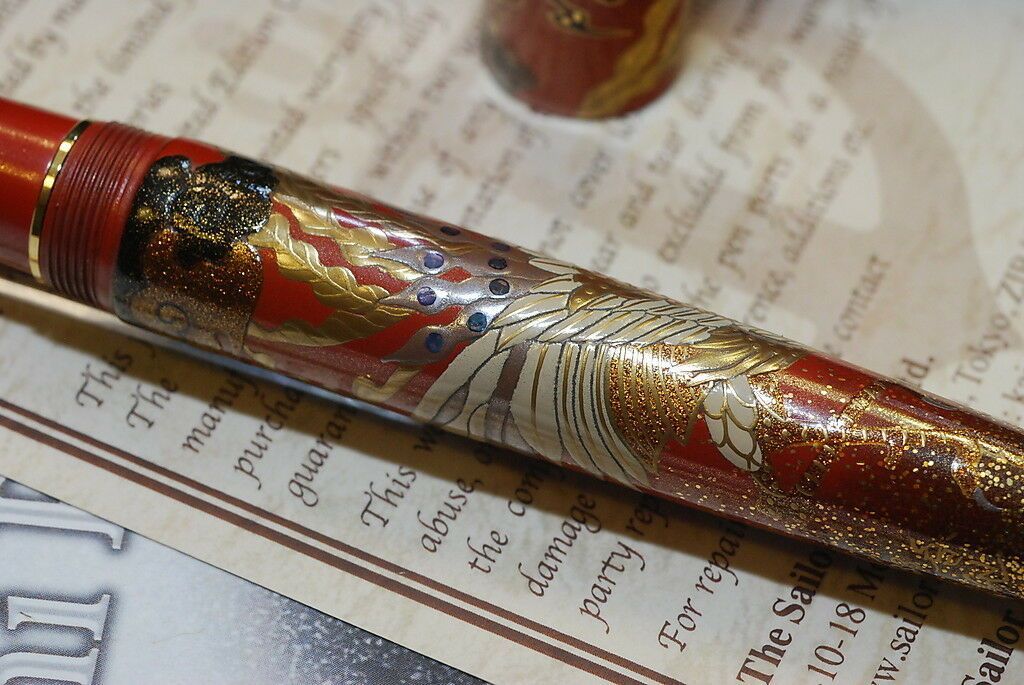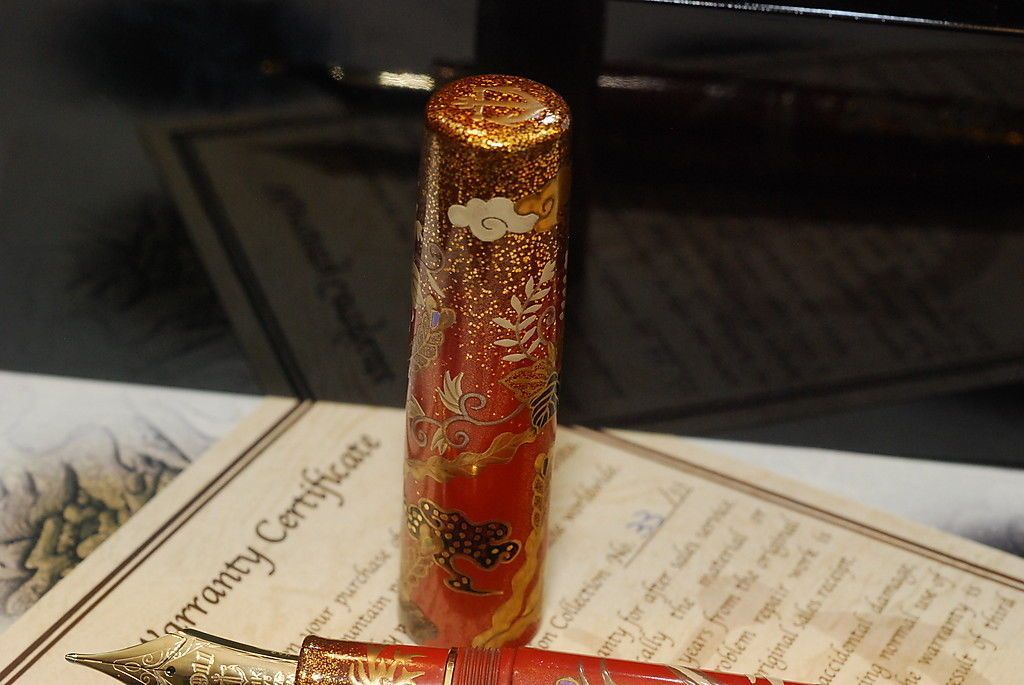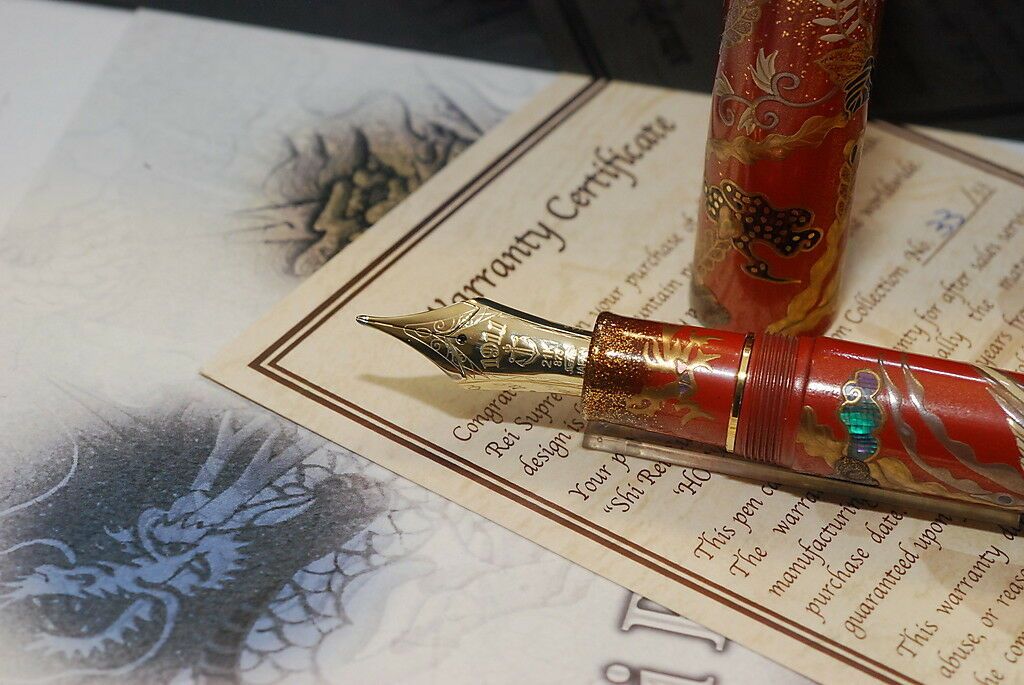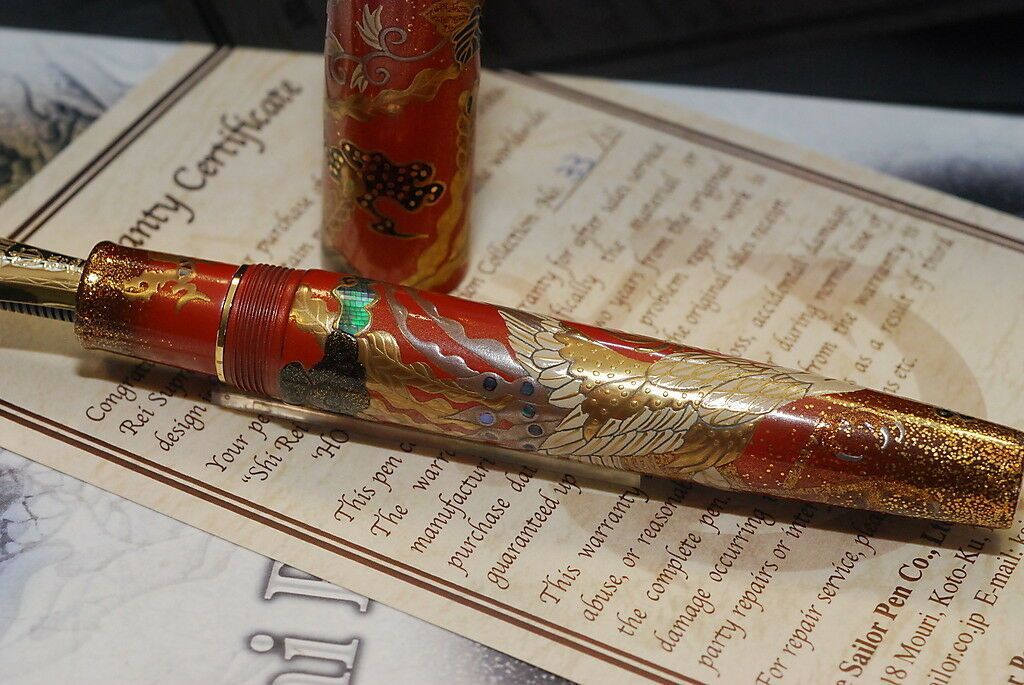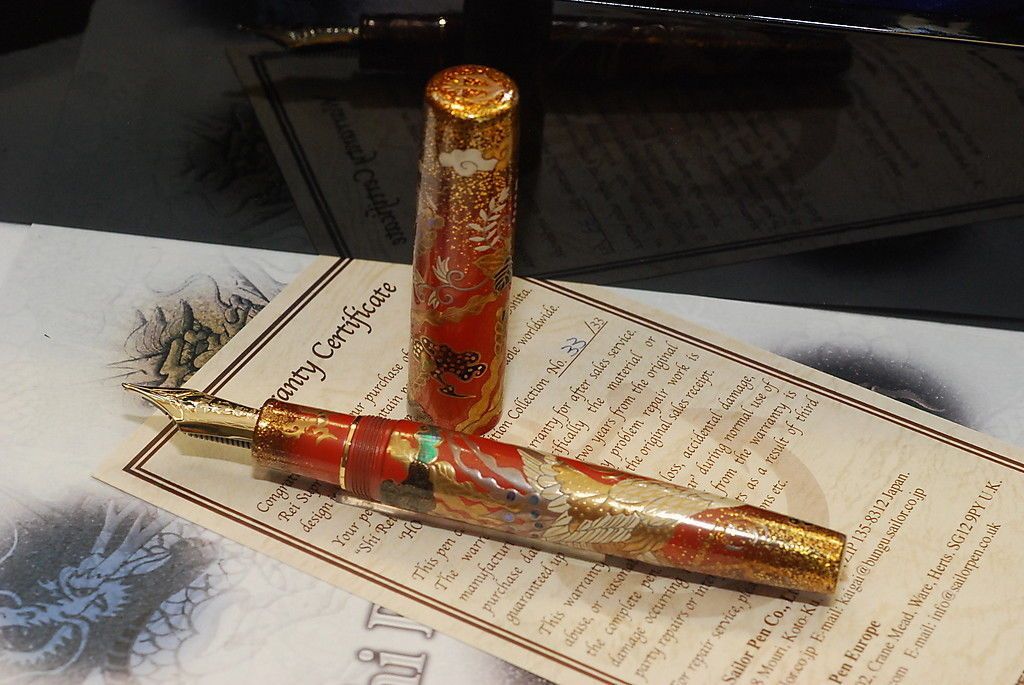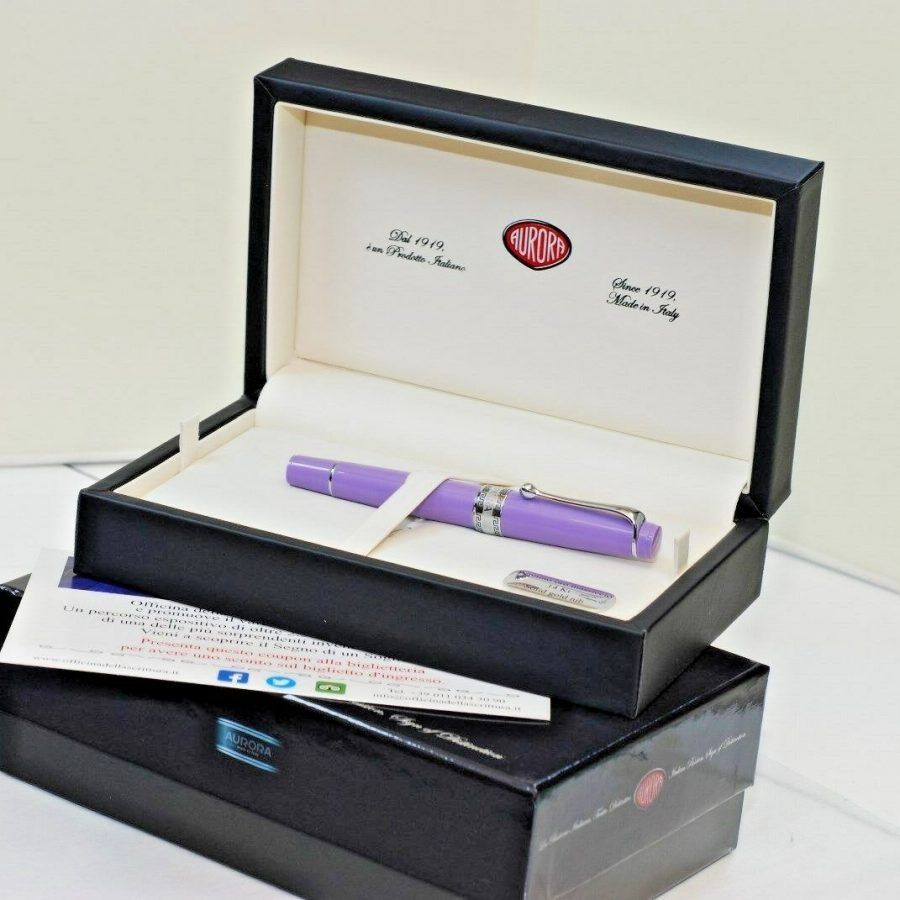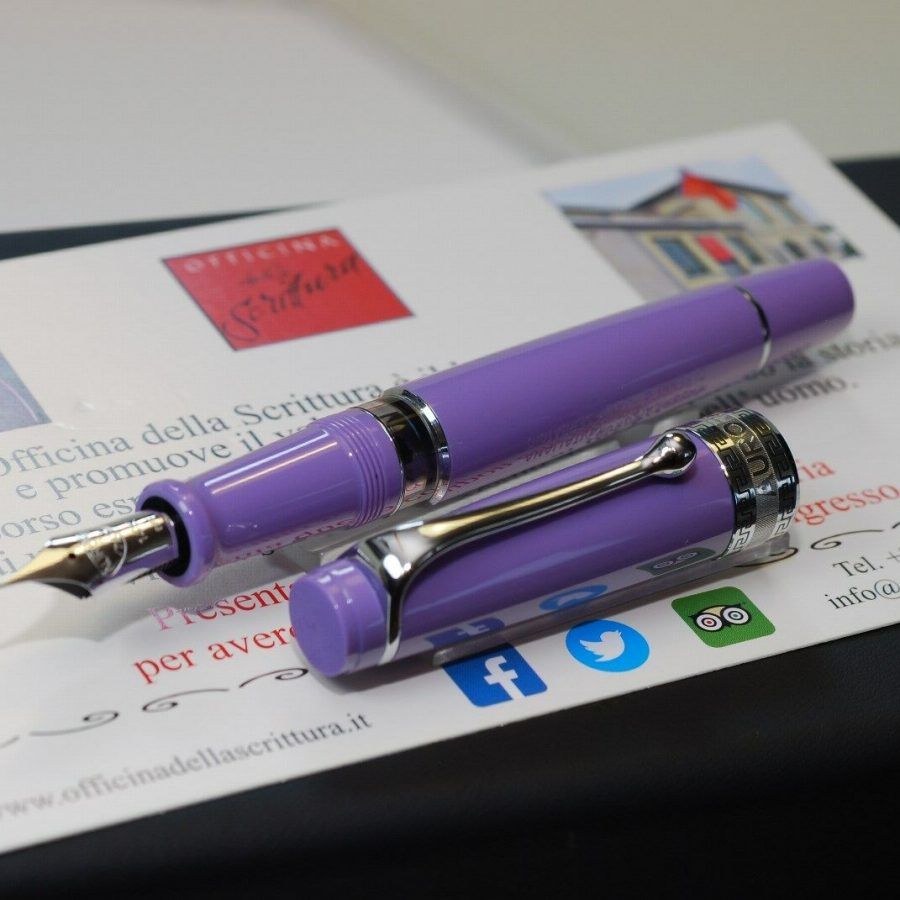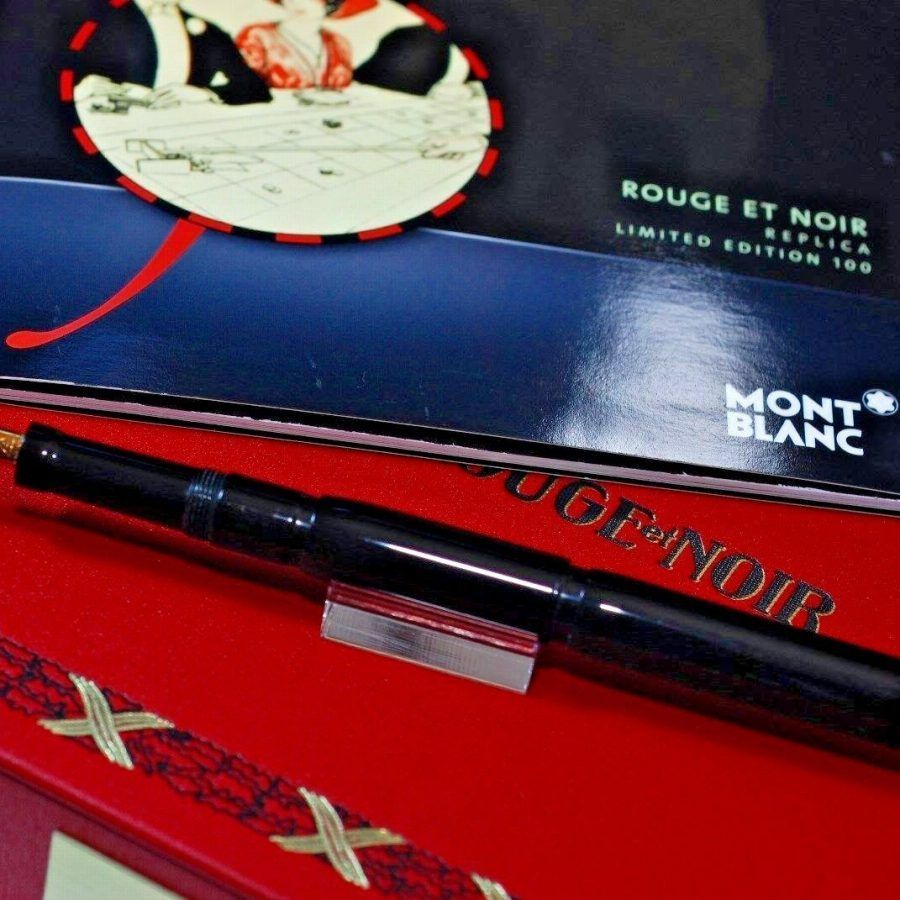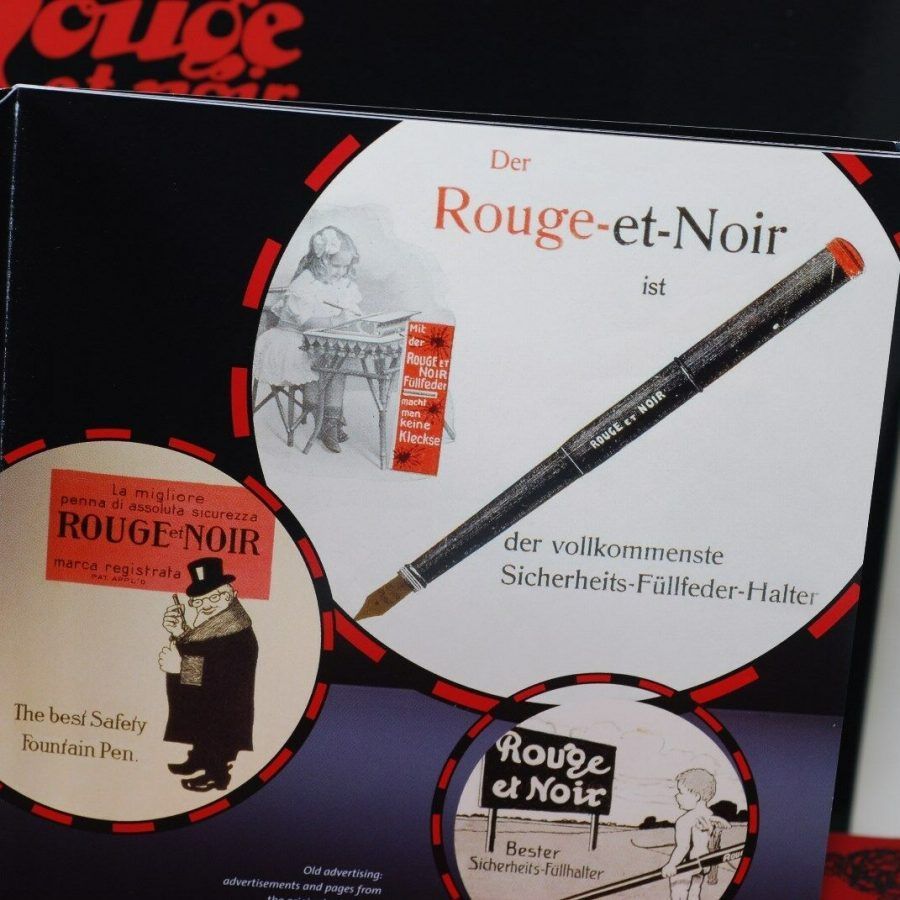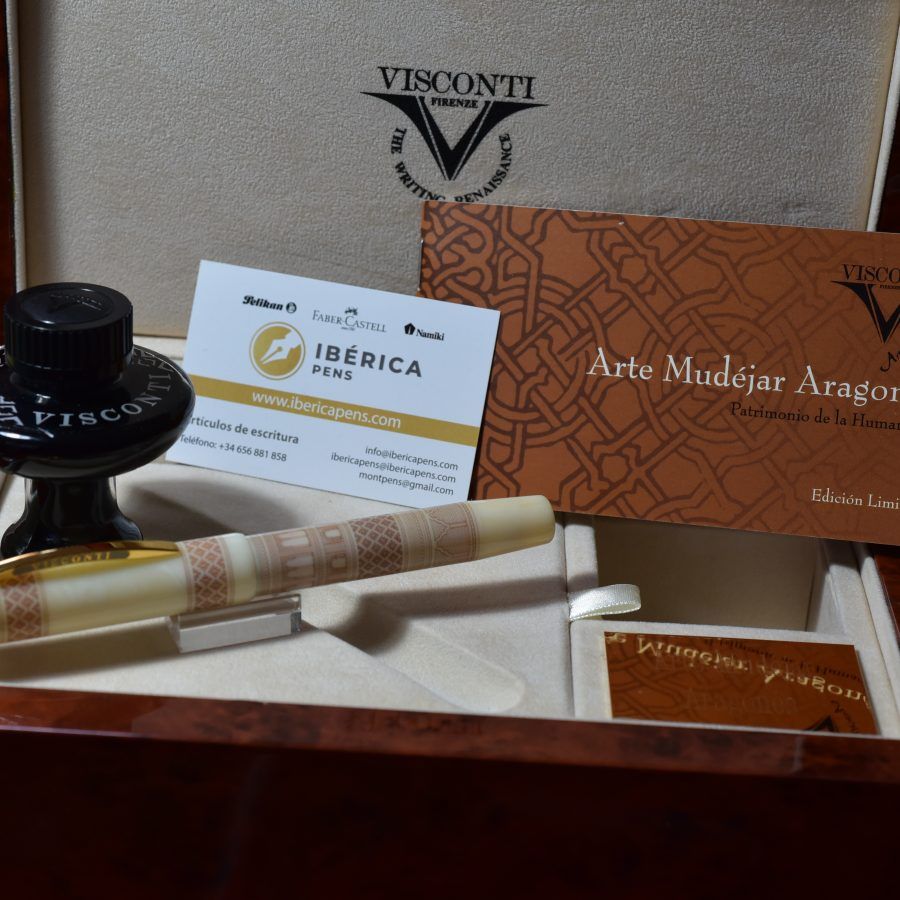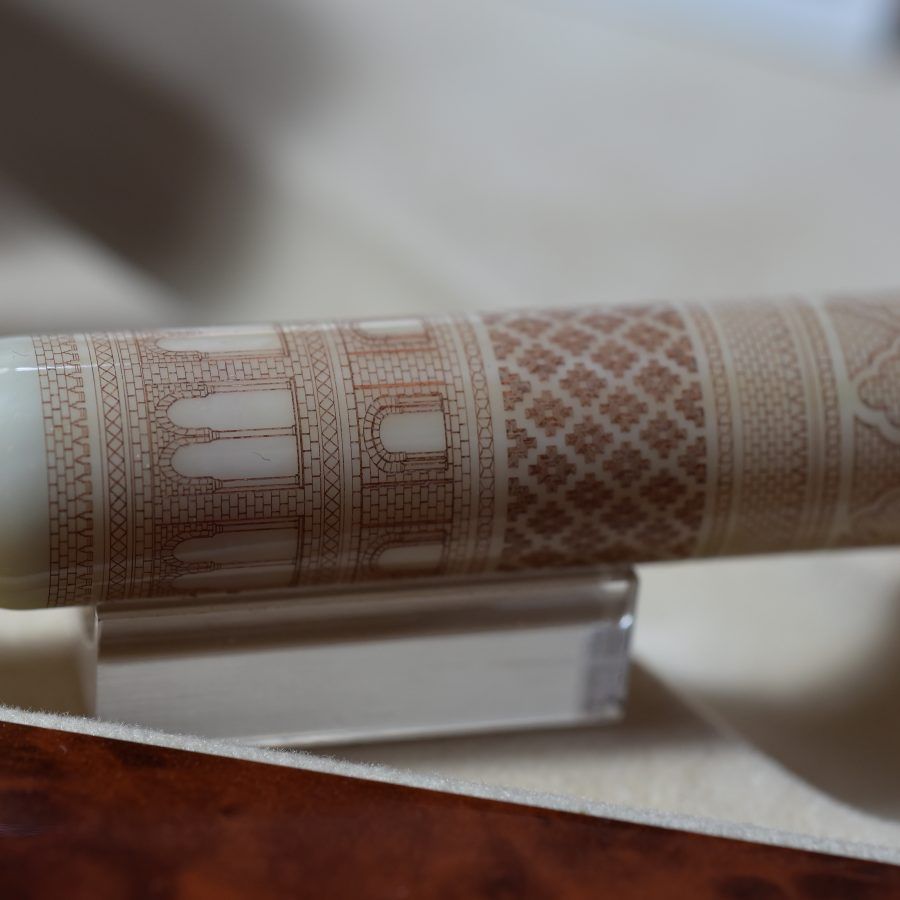Sailor Maki-E Fountain Pen Shi Rei Supreme Series Houou Nº 33/33
25.000,00€
SAILOR FOUNTAIN PEN SHI REI SUPREME SERIES HOUOU NUMBER 33/33
NEW
Model name: “Houou” Phoenix
Le dragon-phénix ” Houou ” : la Paix.
Symbole du Sud, sa couleur est le rouge.
Number: 10-9821-803
Materials: Ebonite
Filling system: Converter & Cartridge type
Nib selection: Nagahara ‘Cross Point’ 21K Gold
Limited Edition: 33 pcs
Available July/August 2010
The Shi-rei series are dedicated to the four mythical Chinese Celestial Guardians of the Universe -‘Ryu’ (the Dragon), ‘Ki-ryu ‘ (the Turtle), ‘Kirin’ (the Unicorn) and ‘Hou-ou ‘ (the Phoenix). These ‘spiritual’ creatures are believed to control every point of the compass, the elements and spiritual aspects of everyday life.
A special edition of the well known King of Pens “Shi-Rei” (Guardians) series produced by Kosen Oshita. Each design is limited to 33 pieces and comes fitted with the Nagahara Cross Point 21k nib.
1 in stock
Description
Views: 215
The Shi-rei series are dedicated to the four mythical Chinese Celestial Guardians of the Universe -‘Ryu’ (the Dragon), ‘Ki-ryu ‘ (the Turtle), ‘Kirin’ (the Unicorn) and ‘Hou-ou ‘ (the Phoenix). These ‘spiritual’ creatures are believed to control every point of the compass, the elements and spiritual aspects of everyday life.
A special edition of the well known King of Pens “Shi-Rei” (Guardians) series produced by Kosen Oshita. Each design is limited to 33 pieces and comes fitted with the Nagahara Cross Point 21k nib.
‘MAKI–E’ is a highly respected traditional Japanese hand applied decoration process with more than one thousand five hundred years of history. It is regarded as the top of the Japanese decorative crafts on many different materials. Precious materials such as Gold, Silver, Enamel, Abalone shell (mother of pearl) etc. are combined and applied by hand by specialized accredited MAKI-E artists with traditional Urushi lacquers to represent a variety of traditional Japanese art, and culture.
These is very traditional techniques can only be applied by truly experienced Japanese craftsman who have historical family skills and pride such traditional art forms and true craftsmanship.


 Español
Español 